Brightest moon in almost 69 years lights up sky around globe
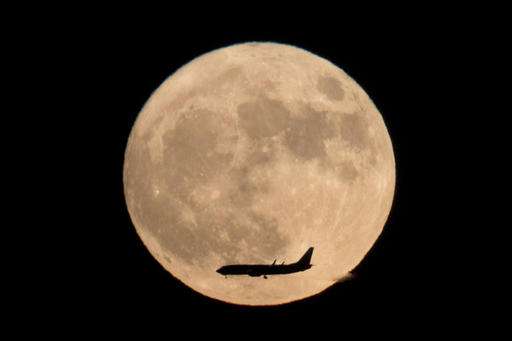
The brightest moon in almost 69 years is lighting up the sky in a treat for star watchers around the globe.
The phenomenon known as the supermoon reached its peak luminescence in North America before dawn on Monday. Its zenith in Asia and the South Pacific was Monday night. Across the international dateline in New Zealand, it was to reach its brightest after midnight Tuesday local time.
The moon orbits the Earth in an oval shape. The moon will be at its brightest this week because it is coming closer to the Earth along its elliptical orbit than at any time since January 1948. The supermoon will also bring stronger than usual high tides, followed by plunging low tides the next morning.
Viewers can expect to see a moon about 14 percent larger in diameter and about 30 percent brighter than when it's at its furthest distance from the earth. It won't be as big and bright again for another 18 years.
NASA says its closest approach will occur at 6:21 a.m. EST (1121 GMT) Monday when the moon comes within 221,523 miles (356,508 kilometers). That's from the center of the Earth to the center of the moon. Full moon will occur at 8:52 a.m. EST (1352 GMT).
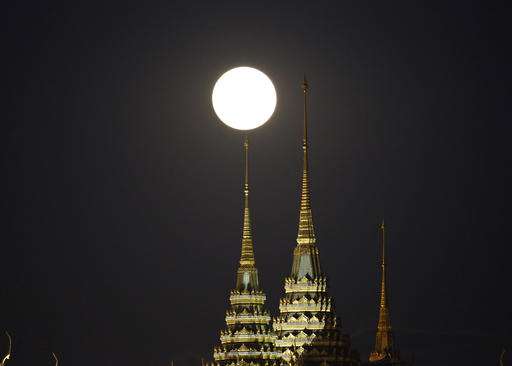
According to the astronomy website earthsky.org, the term supermoon entered usage five years ago when the closest full moon fell on March 19, 2011. The scientific term is perigee full moon.
In 2034, the moon will come even closer, within 221,485 miles (356,456 kilometers). That, too, will be a supermoon.
-
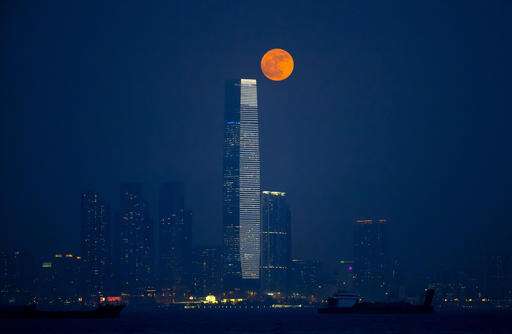
The moon rises over Victoria Harbour in Hong Kong, Monday, Nov. 14, 2016. The brightest moon in almost 69 years lights up the sky this week in a treat for star watchers around the globe. The phenomenon is known as the supermoon. The tall building is the International Commerce Centre. (AP Photo/Kin Cheung) -
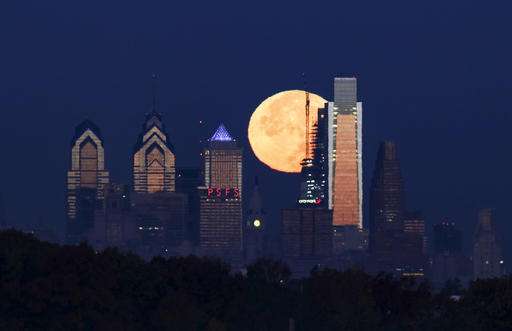
The supermoon sets behind the Philadelphia skyline on Monday, Nov. 14, 2016. The brightest moon in almost 69 years lights up the sky this week in a treat for star watchers around the globe. The phenomenon is known as the supermoon. (AP Photo/Joseph Kaczmarek) -
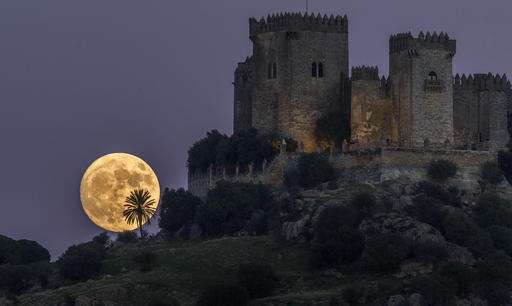
The moon rises behind the castle of Almodovar in Cordoba, southern Spain, on Sunday, Nov. 13, 2016. The Supermoon on November 14, 2016, will be the closest a full moon has been to Earth since January 26, 1948. (AP Photo/Miguel Morenatti) -
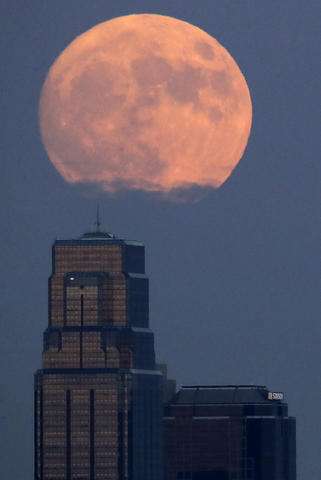
The moon rises beyond downtown buildings Sunday, Nov. 13, 2016, in Kansas City, Mo. Monday's so-called supermoon will be extra super - it will be the closest the moon comes to us in almost 69 years. And it won't happen again for another 18 years. (AP Photo/Charlie Riedel) -
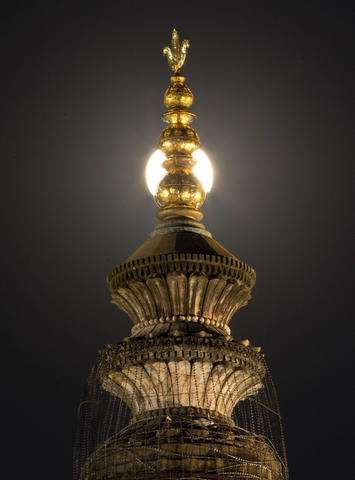
The moon rises behind the dome of the Kamakhya Hindu temple in Gauhati, India, Monday, Nov. 14, 2016. The brightest moon in almost 69 years lights up the sky this week in a treat for star watchers around the globe. The phenomenon known as the supermoon will reach its most luminescent in North America before dawn on Monday. (AP Photo/ Anupam Nath) -
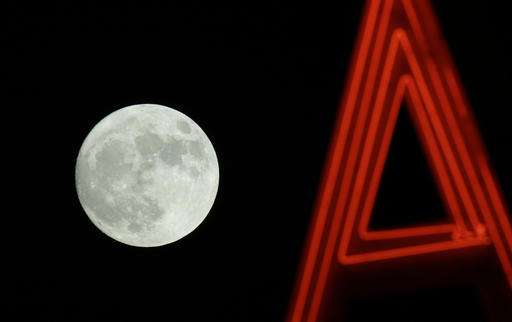
The moon rises behind a neon sign in Sacramento, Calif., Sunday, Nov. 13, 2016. Monday morning's supermoon will be the closet a full moon has been to the Earth since Jan. 26, 1948. (AP Photo/Rich Pedroncelli) -
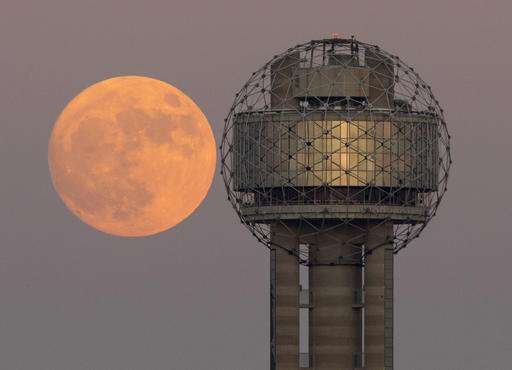
The moon rises behind Reunion Tower in downtown Dallas, Sunday evening, Nov. 13, 2016. On Monday the supermoon will be the closest full moon to earth since 1948, and it won't be as close again until 2034. (Tom Fox/The Dallas Morning News via AP) -
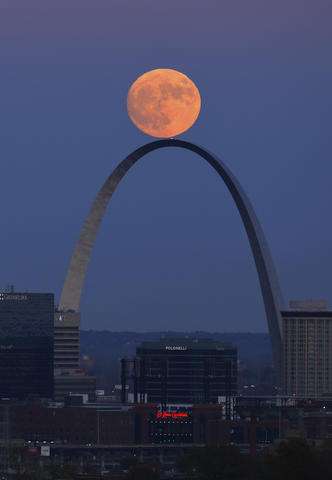
The moon rises over the Arch in St. Louis, as seen from the Compton Hill Water Tower on Sunday, Nov. 13, 2016. On Monday, Earthlings will be treated to a so-called supermoon - the closest full moon of the year. Monday's supermoon will be extra super - it will be the closest the moon comes to us in almost 69 years. And it won't happen again for another 18 years. (David Carson/St. Louis Post-Dispatch via AP) -
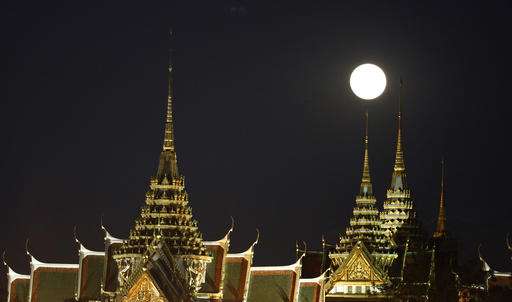
The moon rises over the Grand Palace in Bangkok, Thailand Monday, Nov. 14, 2016. The brightest moon in almost 69 years lights up the sky on Monday in a treat for star watchers around the globe. The phenomenon is known as the supermoon. (AP Photo/Sakchai Lalit) -
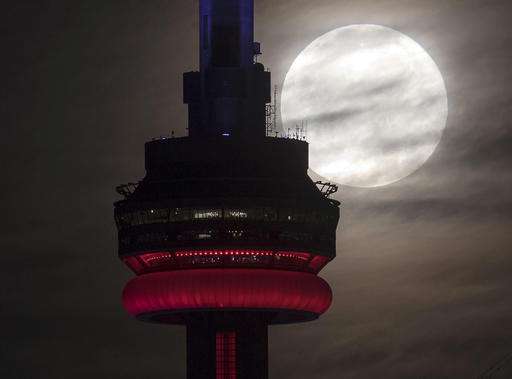
The supermoon sets behind the CN tower in Toronto on Monday, Nov. 14, 2016. The brightest moon in almost 69 years lights up the sky this week in a treat for star watchers around the globe. The phenomenon is known as the supermoon. (Frank Gunn/The Canadian Press via AP)
© 2016 The Associated Press. All rights reserved.




















